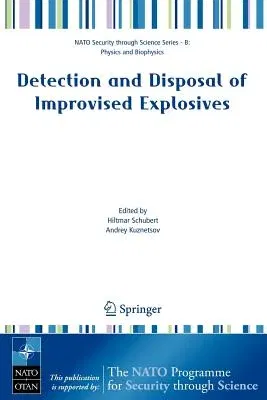Detection and Disposal of Improvised Explosives (2006)Paperback - 2006, 31 May 2006

Qty
1
Turbo
Ships in 2 - 3 days
In Stock
Free Delivery
Cash on Delivery
15 Days
Free Returns
Secure Checkout
Part of Series
NATO Security Through Science Series B:
Part of Series
NATO Security Through Science Series / NATO Security Through
Part of Series
NATO Security Through Science
Part of Series
NATO Science for Peace and Security Series / NATO Science fo
Part of Series
NATO Science for Peace and Security Series B: Physics and Bi
Part of Series
NATO Security for Science Series B: Physics and Biophysics
Part of Series
NATO Security Through Science Series B: Physics and Biophysi
Print Length
230 pages
Language
English
Publisher
Springer
Date Published
31 May 2006
ISBN-10
1402048866
ISBN-13
9781402048869
Description
Product Details
Book Edition:
2006
Book Format:
Paperback
Country of Origin:
US
Date Published:
31 May 2006
Dimensions:
23.39 x
15.6 x
1.37 cm
ISBN-10:
1402048866
ISBN-13:
9781402048869
Language:
English
Location:
Dordrecht
Pages:
230
Publisher:
Series:
NATO Security Through Science Series B:NATO Security Through Science Series / NATO Security ThroughNATO Security Through ScienceNATO Science for Peace and Security Series / NATO Science foNATO Science for Peace and Security Series B: Physics and BiNATO Security for Science Series B: Physics and BiophysicsNATO Security Through Science Series B: Physics and Biophysi
Weight:
362.87 gm

